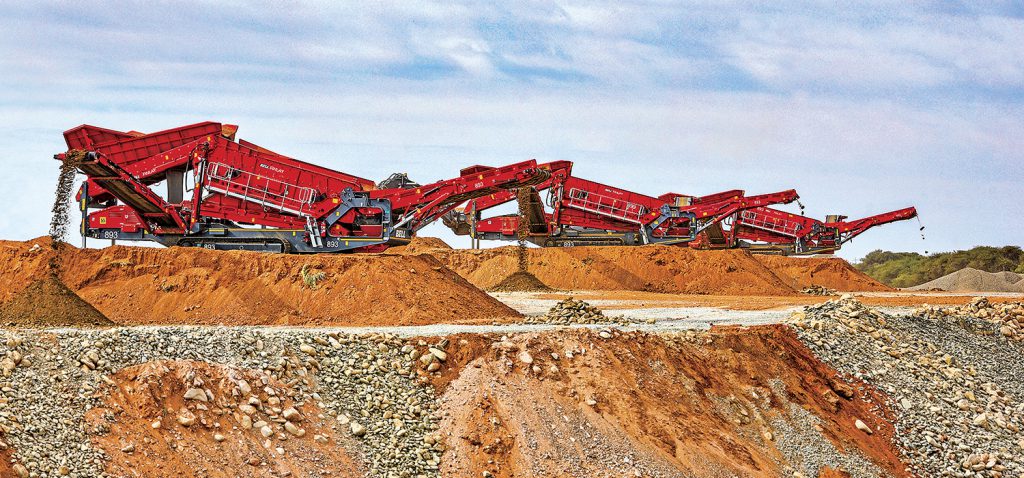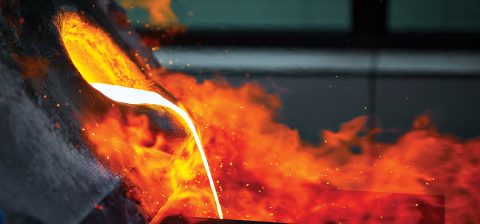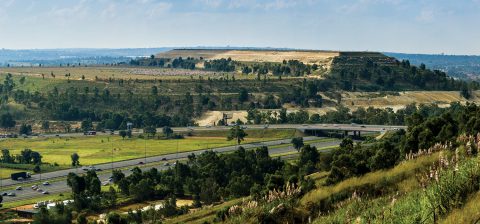SA Mining
Safety And Innovation
Mining and construction equipment manufacturers face pressures to continuously evolve in line with industry demands. SA Mining recently caught up with Bell Equipment South Africa CEO Leon Goosen to chat about the challenges and opportunities unfolding in the equipment market.
What are some of the key trends influencing the transport and earthmoving sectors?
Key trends are that fleet owners are sweating their assets, running them for longer hours due to economic pressure driven by low commodity prices and political uncertainty/instability. Due to reduced foreign investment and economic instability in the region, contract periods are generally shorter and we are seeing the increasing acceptance of non-premium products as another emerging trend. There is also a demand for design features that protect assets driven by more stringent safety regulations, particularly in the mining sector, and a greater need for asset security because of the capital cost of equipment.
What are the key challenges faced by original equipment manufacturers (OEMs)?
Challenges include creating an understanding of the benefits of investing in premium products over non-premium products in terms of increased reliability and uptime, resale value and OEM support. There is also the challenge of ensuring that ageing equipment remains reliable and productive, which creates the opportunity for OEMs to offer aftermarket support and services that encourage equipment owners to invest in the second life of their machines through remanufacturing.
How are client demands influencing product development?
One of the largest factors influencing product development would be safety. Safety measures are being implemented on all job sites around the world, therefore there is a continual demand to make equipment safer. Bell Equipment is well placed at the forefront of innovation having numerous automated features as standard which protect the operator and the vehicle. There is also always a demand for cost saving, therefore Bell Equipment has developed a range of 4×4 articulated dump trucks (ADTs) that are more cost-effective to run on sites and do not need 6×6 off-road ability.
In line with technology advancements, how is Bell Equipment aligned?
Bell Equipment is an innovation pioneer, having been the first OEM to develop on-board weighing, the manufacture of a 50- and 60-tonne ADT, incorporating Tip Safe to prevent bin tipping at an unsafe angle, developing I-Tip for automatic bin tipping at the touch of a button, installing Turbo Spin Protection that varies engine idle time according to how hard the engine has been working and introducing Fleetm@tic, our proprietary satellite-based telematics software.
Are there any particular new developments that you would like to highlight?
From the fourth quarter of 2019 all new Bell ADTs will be Pedestrian Detection System (PDS) ready. PDS and Collision Avoidance Systems (CAS) are the first commercial practical steps for ADT operations to move towards autonomous operation – we are excited to be moving in this direction. South Africa’s Department of Mineral Resources has stipulated that mining trucks be supplied with these systems as standard in 2020 – this trend is expected to grow globally. The intention is that the truck’s brake system is electronically activated should there be a risk of collision.
Is the global green agenda influencing equipment manufacturers? How?
Definitely. Owing to emission regulations in certain countries Bell Equipment has to offer three different engine variants per truck in order to satisfy all “green legislation”. Mercedes-Benz is the preferred engine supplier for our ADTs because of their proven fuel economy and reduced emission levels which together deliver a reduced environmental footprint.
We also take cognisance of the global green agenda in our manufacturing facilities where we have initiated the process of recycling liquids on-site at our Richards Bay factory by means of specialised recycling units. This year we have included the recycling of used thinners as well as recycling of used coolant from machining processes as an environmentally responsible option of reusing waste.
To further reduce our environmental impact at our Richards Bay factory, water harvesting takes place. Harvested water is used in the operational areas to supply the wash bays and water harvesting tanks have been installed at our branches where critical water shortages are foreseen.
We are also investigating the feasibility of solar panels to generate power, which would be integrated back into the electrical supply of the Richards Bay office block. At our Jet Park offices in Johannesburg all workshop and warehouse lights are being replaced with new-technology energy-saving lights as part of an electricity-saving programme – this has an added cost-saving benefit.
Where is Bell Equipment positioned in line with electric vehicle manufacturing?
Bell Equipment’s core product is the ADT and it is not yet feasible to run such trucks on batteries. The size and cost of the batteries required do not make this a viable project at the moment. This would be more compatible with loading tools and vehicles that do not travel too far.
In terms of electrification, battery technology has progressed phenomenally compared to 20 years ago, but it is still a long way from being commercially viable and capable of replacing diesel engines. With today’s technology, operators would need additional machines to keep their jobsites running while batteries are being recharged. Another option is for the batteries to be swapped out and recharged rather than the whole machine being swapped. This may prove to be a more workable solution going forward. Full electrification is likely to find itself in the underground ADT industry before it is seen in surface operations, as the benefits for emissions, noise and heat generation are much greater in that environment.
OEMs are also investigating the introduction of hybrid technology in the industry and weighing up what this technology has to offer and the cost thereof. Hybrid technology uses an engine to run an electrical generator that drives an electric motor. Sometimes the generator is used in conjunction with batteries that help buffer the demand and recharge during braking, for example.
Although currently very expensive, hybrids have the potential to offer better productivity, fuel efficiency and lower emissions (both carbon dioxide and traditional diesel emissions). This is because it would allow manufacturers to use smaller engines as a truck would run batteries and the engine together when the operator needs maximum power, thereby saving fuel.
What does winning The Exporter of the Year Award mean for the company?
We’re pleased and proud to have won this accolade because it recognises our efforts and success as a manufacturer and exporter of heavy equipment. Exports account for a good proportion of turnover and our exports increased year on year from 2017 to 2018, showing good growth. As a South African company our exports have mostly local content and we are always looking at ways to increase this.
At Bell we believe that when we help our customers succeed, so do we, and we therefore are continuously adapting to meet the demands of customers and regions. This is evident in the company currently offering the largest range of ADTs including 6×6 and 4×4 variations, as well as a number of purpose-built special units.







 Sign-up and receive the Business Media MAGS newsletter OR SA Mining newsletter straight to your inbox.
Sign-up and receive the Business Media MAGS newsletter OR SA Mining newsletter straight to your inbox.